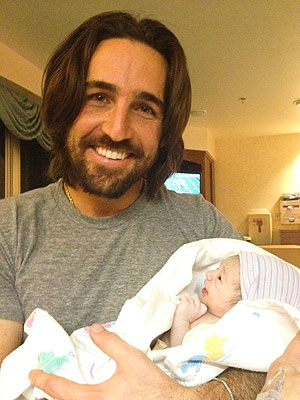WASHINGTON — Facing the possibility that President Obama might not win a second term, his administration accelerated work in the weeks before the election to develop explicit rules for the targeted killing of terrorists by unmanned drones, so that a new president would inherit clear standards and procedures, according to two administration officials.
The matter may have lost some urgency after Nov. 6. But with more than 300 drone strikes and some 2,500 people killed by the Central Intelligence Agency and the military since Mr. Obama first took office, the administration is still pushing to make the rules formal and resolve internal uncertainty and disagreement about exactly when lethal action is justified.
Mr. Obama and his advisers are still debating whether remote-control killing should be a measure of last resort against imminent threats to the United States, or a more flexible tool, available to help allied governments attack their enemies or to prevent militants from controlling territory.
Though publicly the administration presents a united front on the use of drones, behind the scenes there is longstanding tension. The Defense Department and the C.I.A. continue to press for greater latitude to carry out strikes; Justice Department and State Department officials, and the president’s counterterrorism adviser, John O. Brennan, have argued for restraint, officials involved in the discussions say.
More broadly, the administration’s legal reasoning has not persuaded many other countries that the strikes are acceptable under international law. For years before the Sept. 11, 2001, attacks, the United States routinely condemned targeted killings of suspected terrorists by Israel, and most countries still object to such measures.
But since the first targeted killing by the United States in 2002, two administrations have taken the position that the United States is at war with Al Qaeda and its allies and can legally defend itself by striking its enemies wherever they are found.
Partly because United Nations officials know that the United States is setting a legal and ethical precedent for other countries developing armed drones, the U.N. plans to open a unit in Geneva early next year to investigate American drone strikes.
The attempt to write a formal rule book for targeted killing began last summer after news reports on the drone program, started under President George W. Bush and expanded by Mr. Obama, revealed some details of the president’s role in the shifting procedures for compiling “kill lists” and approving strikes. Though national security officials insist that the process is meticulous and lawful, the president and top aides believe it should be institutionalized, a course of action that seemed particularly urgent when it appeared that Mitt Romney might win the presidency.
“There was concern that the levers might no longer be in our hands,” said one official, speaking on condition of anonymity. With a continuing debate about the proper limits of drone strikes, Mr. Obama did not want to leave an “amorphous” program to his successor, the official said. The effort, which would have been rushed to completion by January had Mr. Romney won, will now be finished at a more leisurely pace, the official said.
Mr. Obama himself, in little-noticed remarks, has acknowledged that the legal governance of drone strikes is still a work in progress.
“One of the things we’ve got to do is put a legal architecture in place, and we need Congressional help in order to do that, to make sure that not only am I reined in but any president’s reined in terms of some of the decisions that we’re making,” Mr. Obama told Jon Stewart in an appearance on “The Daily Show” on Oct. 18.
In an interview with Mark Bowden for a new book on the killing of Osama bin Laden, “The Finish,” Mr. Obama said that “creating a legal structure, processes, with oversight checks on how we use unmanned weapons, is going to be a challenge for me and my successors for some time to come.”
The president expressed wariness of the powerful temptation drones pose to policy makers. “There’s a remoteness to it that makes it tempting to think that somehow we can, without any mess on our hands, solve vexing security problems,” he said.
Despite public remarks by Mr. Obama and his aides on the legal basis for targeted killing, the program remains officially classified. In court, fighting lawsuits filed by the American Civil Liberties Union and The New York Times seeking secret legal opinions on targeted killings, the government has refused even to acknowledge the existence of the drone program in Pakistan.
But by many accounts, there has been a significant shift in the nature of the targets. In the early years, most strikes were aimed at ranking leaders of Al Qaeda thought to be plotting to attack the United States. That is the purpose Mr. Obama has emphasized, saying in a CNN interview in September that drones were used to prevent “an operational plot against the United States” and counter “terrorist networks that target the United States.”
But for at least two years in Pakistan, partly because of the C.I.A.’s success in decimating Al Qaeda’s top ranks, most strikes have been directed at militants whose main battle is with the Pakistani authorities or who fight with the Taliban against American troops in Afghanistan.
In Yemen, some strikes apparently launched by the United States killed militants who were preparing to attack Yemeni military forces. Some of those killed were wearing suicide vests, according to Yemeni news reports.
“Unless they were about to get on a flight to New York to conduct an attack, they were not an imminent threat to the United States,” said Micah Zenko, a fellow at the Council on Foreign Relations who is a critic of the strikes. “We don’t say that we’re the counterinsurgency air force of Pakistan, Yemen and Somalia, but we are.”
Then there is the matter of strikes against people whose identities are unknown. In an online video chat in January, Mr. Obama spoke of the strikes in Pakistan as “a targeted, focused effort at people who are on a list of active terrorists.” But for several years, first in Pakistan and later in Yemen, in addition to “personality strikes” against named terrorists, the C.I.A. and the military have carried out “signature strikes” against groups of suspected, unknown militants.
Originally that term was used to suggest the specific “signature” of a known high-level terrorist, such as his vehicle parked at a meeting place. But the word evolved to mean the “signature” of militants in general — for instance, young men toting arms in an area controlled by extremist groups. Such strikes have prompted the greatest conflict inside the Obama administration, with some officials questioning whether killing unidentified fighters is legally justified or worth the local backlash.
Many people inside and outside the government have argued for far greater candor about all of the strikes, saying excessive secrecy has prevented public debate in Congress or a full explanation of their rationale. Experts say the strikes are deeply unpopular both in Pakistan and Yemen, in part because of allegations of large numbers of civilian casualties, which American officials say are exaggerated.
Gregory D. Johnsen, author of “The Last Refuge: Yemen, Al Qaeda and America’s War in Arabia,” argues that the strike strategy is backfiring in Yemen. “In Yemen, Al Qaeda is actually expanding,” Mr. Johnsen said in a recent talk at the Brookings Institution, in part because of the backlash against the strikes.
Shuja Nawaz, a Pakistan-born analyst now at the Atlantic Council in Washington, said the United States should start making public a detailed account of the results of each strike, including any collateral deaths, in part to counter propaganda from jihadist groups. “This is a grand opportunity for the Obama administration to take the drones out of the shadows and to be open about their objectives,” he said.
But the administration appears to be a long way from embracing such openness. The draft rule book for drone strikes that has been passed among agencies over the last several months is so highly classified, officials said, that it is hand-carried from office to office rather than sent by e-mail.












